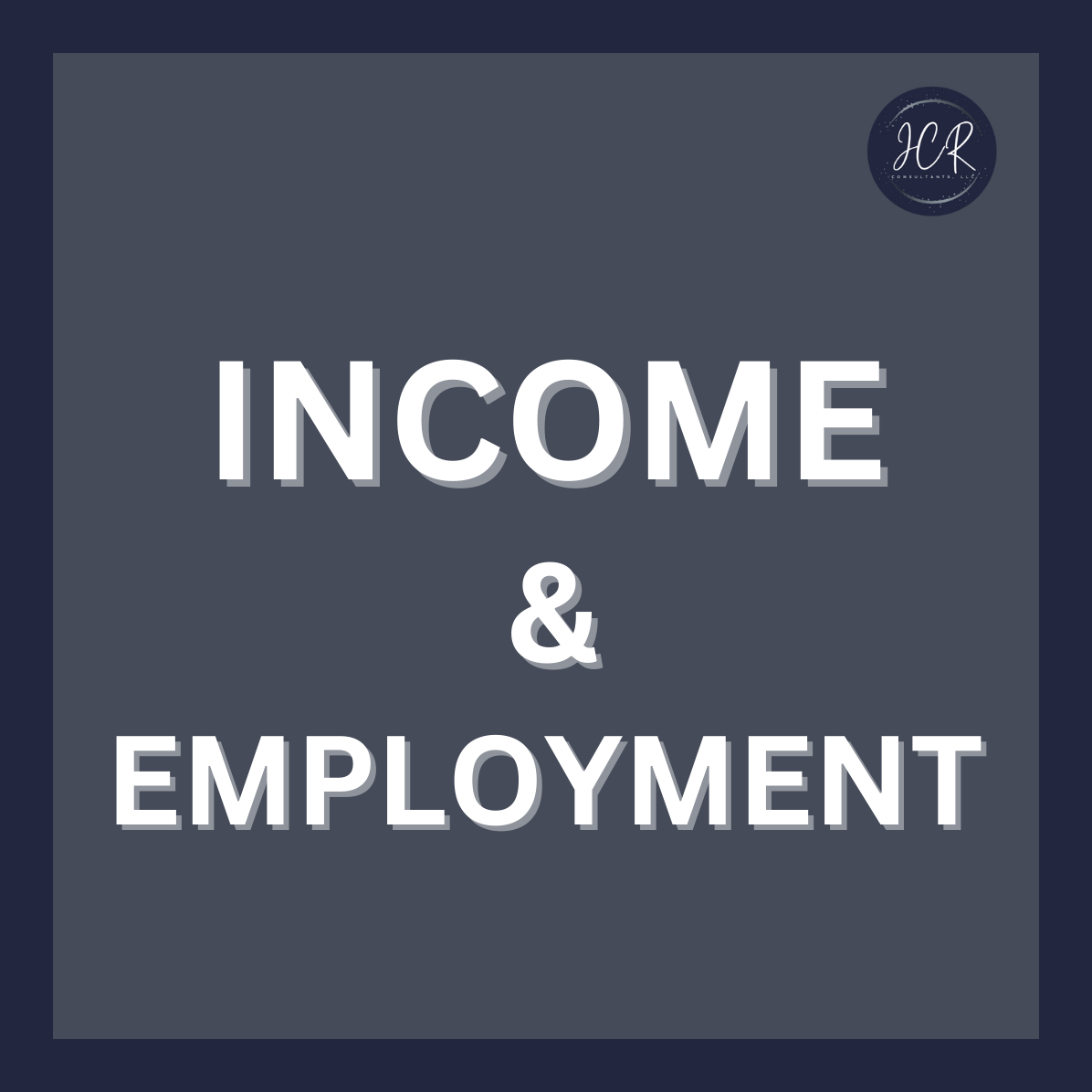Although Employment and Income may sound like it is one item there is a significant difference between the two and what is communicated to an Underwriter (this is the person that approves or denies your loan).
When Employment is considered in a loan analysis, the underwriter is looking for employment stability. This is determined by the length of employment with the same employer. If there has been a recent change of employment, then, the question is if this is considered a lateral or promotion/increase in position. It must be established that the employment is stable. Staying in the same industry is critical.
Additionally, self-employment is considered significantly different from W2 employment. The person that is applying for a home loan and has less the 2 years as a business owner will most likely be denied a traditional loan by not meeting the guidelines for employment stability. I would go as far as to say that it is best to have a minimum of 2 tax year tax returns to establish the stability of the business.
The second aspect is income. First let’s look at the pay received by the employee from the employer to ensure it is classified as W2 income or 1099 (Independent Contractor).
Given the employment arrangement is as an employee, the income would be considered as W2 but the following types of income impact its calculations:
- Hourly/Salary – this income has specific formulas in the guidelines on how it will be calculated. This income can be used once the Borrower has started the new position or if a letter can be provided by an employer indicating the start date. Also, this income can be used if the new employment/promotion will start within the coming 60 days. What is not eligible to be considered is any potential income such as bonus or commissions because this income must have a likelihood of continuing which is established by having a two-year history or receipt and the employer confirming the “Likelihood” of continence. Employers are sometimes hesitant to mark this box because they interpret it as “Guaranteed” income when in truth, the lender just wants to confirm there is no change of pay structure at the time of the loan. This is generally one of the main reasons many W2 employees are not eligible for the amount of loan they believe.
- Commission Income (Strictly) – some employees decide to transition from full-time hourly/salary positions to strictly commission-based income because of the potential pay increase. Unknowingly thinking that the potential income can be used to qualify for a purchase or refinance home loan. Again the traditional lending guidelines are very specific as to how this income is to be calculated. Unfortunately as mentioned above, the actual income is not considered stable unless received for 2 years.
- Self-Employed/1099 Income – this is the most challenging type of applicant to evaluate in the traditional mortgage lending industry. First off there needs to be 2-year history of the business’s existence. The applicant’s tax returns will be used as the basis for calculating the eligible income. The issue comes about that most business owners, rightfully, deduct their business expenses as tax laws allow and the tax returns show little to no income and therefore not eligible for a mortgage per the guidelines. Please note that this explanation is not to determine the acceptability of these guidelines. Just that these are the guidelines as they stand now.
I present this information for the purpose of advising home buyers and investors on how the traditional lending guidelines can impact your plans if this is the only method you are aware of buying your next home or investment property.
It is not the only way to buy real estate. There are several other methods that yes, still take in consideration of Employment and Income, but continue with a more common sense approach. I do not want to paint the picture that everyone is eligible for every loan other than traditional lending. I will say that it is not a show-stopper.
The next article will address how Assets play a role in mortgage lending eligibility and how traditional lender guidelines and how other program guidelines consider them in the lending process.


